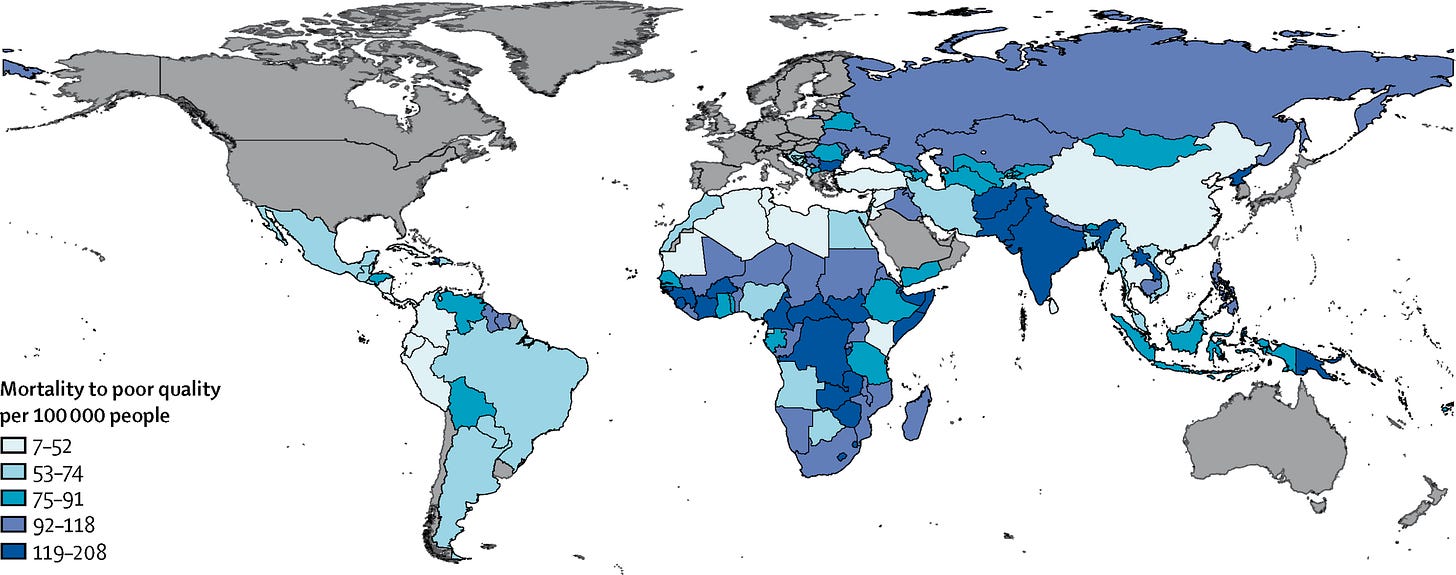The US$ 349.1 Billion Problem: Navigating Indian Hospitals: Part 1
70% of hospitals are private in India, out of which 70% are unstructured and still run on pen and paper.
But first:
This is the official home of XCoV19, the opensource project behind My Health Connect . Things will be up and running here shortly, but you can subscribe in the meantime if you'd like to stay up to date and receive emails when new content is published!
By FY23, the Indian healthcare sector would have reached a US$ 372 billion mark with over 2.1% GDP spent in FY21-22 as part of India’s expenditure on healthcare and the sector would have grown by 22% CAGR since 2016.
This poses an opportunity with great risk.
70% of hospitals are private in India, out of which 70% are not structured and run on pen and paper. According to Kale of Loop Health as cited on TechCrunch:
..fewer than 15% of people in India have purchased healthcare insurance, and of those who have it, most plans only work on hospitalisations and medical procedures..
To the health tech industry what seems like an opportunity to usher in a new wave of InsuranceTech, Fitness, Wellness & HealthTech services, comes with the challenges of market penetration on two fronts, economics and health safety.
At this juncture let me take a quick detour to explain why insurance is a necessary evil.
Why Do People Die? Get Insured. Be Found
Economically, post-pandemic, while medical coverage is growing at ~30% YoY (finance jargon for Year on Year) thanks to the pandemic, FY22 has seen retail health insurance prices also grow by 16%. That means the cost of getting insured and treated is reaching the ceiling for most middle-class Indians. Medical inflation has gone beyond 14%, highest in Asia.
But why are we covering insurance here you ask? For the same reason why 420,000,000 Indians have no health coverage and are clueless when it comes to navigating to healthcare and treatments. That’s 5x times the population of Germany not covered by health insurance!
That means the cost of getting insured and treated is reaching the ceiling for most middle-class Indians.

I must point out that services provided by private ventures such as Loop Health is doing the Indian community a humanitarian service, even if by selling corporate insurance packages because penetrating the Indian market by volume to get the RoI is important as a business and given the economic disparity in India, volume in such an InsuranceTech model is a key metric. So, kudos to their team.
Balancing market volume and bang for the buck to capitalise on such an opportunity is a risk when existing insurance coverage behemoths are already in the market. That’s exactly what allows startups to be fluid with their model, the ability to pivot faster.
By providing ease of navigability and the option of integrated healthcare with tele-consultation, Loop and similar ventures are making its end users aware of the options that they have in their power to avail benefits and navigate to the right healthcare facility.
It remains to be seen, however, the scope of market penetration in making ~100% India being able to avail the benefits.
Stay tuned for the continuation of my post in Part 2 where I discuss about why digitisation matters and what the Indian government is doing about it, the governments NHDM project, private players and how we hacked an Opensource solution in the midst of it all.
And subscribe to our newsletter to get free & latest updates on covid19, our project updates, interviews and more.
Sources:
https://www.outlookindia.com/business/india-s-poor-forced-to-swallow-the-bitter-pill-as-medical-inflation-nibbles-at-their-life-savings--news-199526#:~:text=Medical%20inflation%20is%20mostly%20due,basic%20medicines%20have%20gone%20up.
https://www.commonwealthfund.org/international-health-policy-center/countries/india
https://timesofindia.indiatimes.com/city/chennai/indias-medical-inflation-highest-in-asia-report/articleshow/91478538.cms
https://www.motilaloswal.com/site/rreports/637741185956512719.pdf
https://www.ibef.org/industry/healthcare-india
https://data.worldbank.org/country/IN
Stratified Patient Appointment Scheduling for Community-based Chronic Disease Management Programs, Martin Savelsbergh, Karen Smilowitz - https://doi.org/10.48550/arXiv.1505.07722
Appointment scheduling model in healthcare using clustering algorithms, Nooshin Yousefi, Farhad Hasankhani, Mahsa Kiani - https://doi.org/10.48550/arXiv.1905.03083
https://dhsprogram.com/pubs/pdf/od58/od58.pdf


